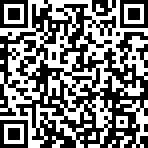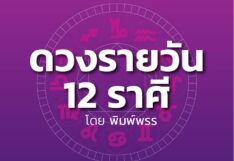Non-Narcotic Medicinal CBD-THC Herbs Redefined
by Wirot Poonsuwa
In a bid to combat the economic consequences of the COVID-19 pandemic, the Food and Drug Administration is revising a number of notifications of the health ministry, including Notification No. 2 released in 2019 which defines what constitutes a non-narcotic herbal product derived from cannabis and hemp.
The notification, also known as the implementing regulation, is likely to serve as the basis of other notifications to, among other things, allow state-backed farmer groups and the private sector to engage in commercial production and sales of non-narcotic herbal products.
The Non-Narcotic 0.2% THC Herb
Notification No. 2 of 2019 has declared that extracts or products containing extracts from cannabis (Cannabis sativa L.) or hemp (Cannabis sativa L. subsp. sativa) are not narcotic when they meet two specific tests.
The first test is that the extract or the product from the extract must consist of cannabidiol or CBD as the main component with THC, short for tetrahydrocannabinol, not exceeding 0.2% of the extract or product by weight.
Second, the extract or the product from the extract is used properly according to its purpose, with proper licensing, as modern medicine under the Pharmaceuticals Act of 1967 or as Thai traditional medicine and an herbal product under the Herbal Products Act of 2019.
Missing either of the two standards will disqualify the extract or the product as a non-narcotic.
CBD as the Main Component
In the first test—CBD as the main component of the cannabis/hemp extract or of the product from the extract—Notification No. 2 stops short of clarifying what constitutes the “main component.”
There is no percentage alluded to in the rule. Is it measured by the CBD compound as a percentage and proportion of the entire extract or product, for example, at 51% of the product by weight?
Or is it the largest component as compared to all other smaller components of the product?
The prevailing current interpretation is the latter. As long as CBD is the largest chemical in the product when compared with the other chemicals, the product has met this first test, provided that the THC element does not exceed the 0.2% maximum.
Notification No. 2 Is Being Made Better
The 2019 Notification No. 2 is being revamped to bolster more flexibility of and applications to the non-narcotic substances.
There is a high probability the words “main component” will be changed to read “main psychoactive substance,” the same reference to CBD.
What the change entails affects the first standard of the non-narcotic definition in that instead of CBD forming the main content of the extract or the product from the extract, CBD now is required to form merely “the main psychoactive substance” of the extract or the product.
Smaller CBD in New Regulation
Translation of the change: an herbal product is a non-narcotic when composed of CBD as the main psychoactive substance larger than any other psychoactive substances, such as THC, in the product, but not necessarily larger than other components of the product. That product must also contain THC not exceeding the 0.2% maximum.
The change is a lesser requirement for CBD, leaving the possibility of other non-psychoactive substances to form the largest component of the product, which presumably is cheaper than CBD and is more cost-friendly to public consumers.
The revision process is predicted to take 2-3 months, which is around the end of 2020 when another new notification will be issued to replace it. Other notifications that rely on the change should be signed into law within that timeframe.
Why Herbs Are Picked Over Pharmaceuticals
Herbs are relatively quick to become legal and be put into the market. Pharmaceuticals and modern medicines are more complicated.
Promoting the production of modern cannabis medicine would be a long shot as it is scientifically more complex and time-consuming to meet the global high standards of the industry and prove the efficacy of cannabis and hemp as therapeutics.
Even in the U.S. there are only a handful of cannabis drugs approved by the U.S. FDA available to the public there.
New Notification No. 2, Mother of All Notifications
Even as the change in the definition of a non-narcotic in Notification No. 2 would alter the meaning of pharmaceuticals as a non-narcotic in the same way as herbal products, there is no government plan to draft other notifications to accelerate the production and sale of cannabis-based modern medicine.
Herbal products are less stringent to deal with and can be an effective tool to create jobs during the epidemic.
The production and sale of cannabis-derived herbal products will be expected in other spinned-off health ministry notifications coming around the same time as the adjusted Notification No. 2 by the end of 2020.
Wirot Poonsuwan is the Senior Counsel and Head of Special Projects at Blumenthal Richter & Sumet in Bangkok and can be reached at [email protected].










